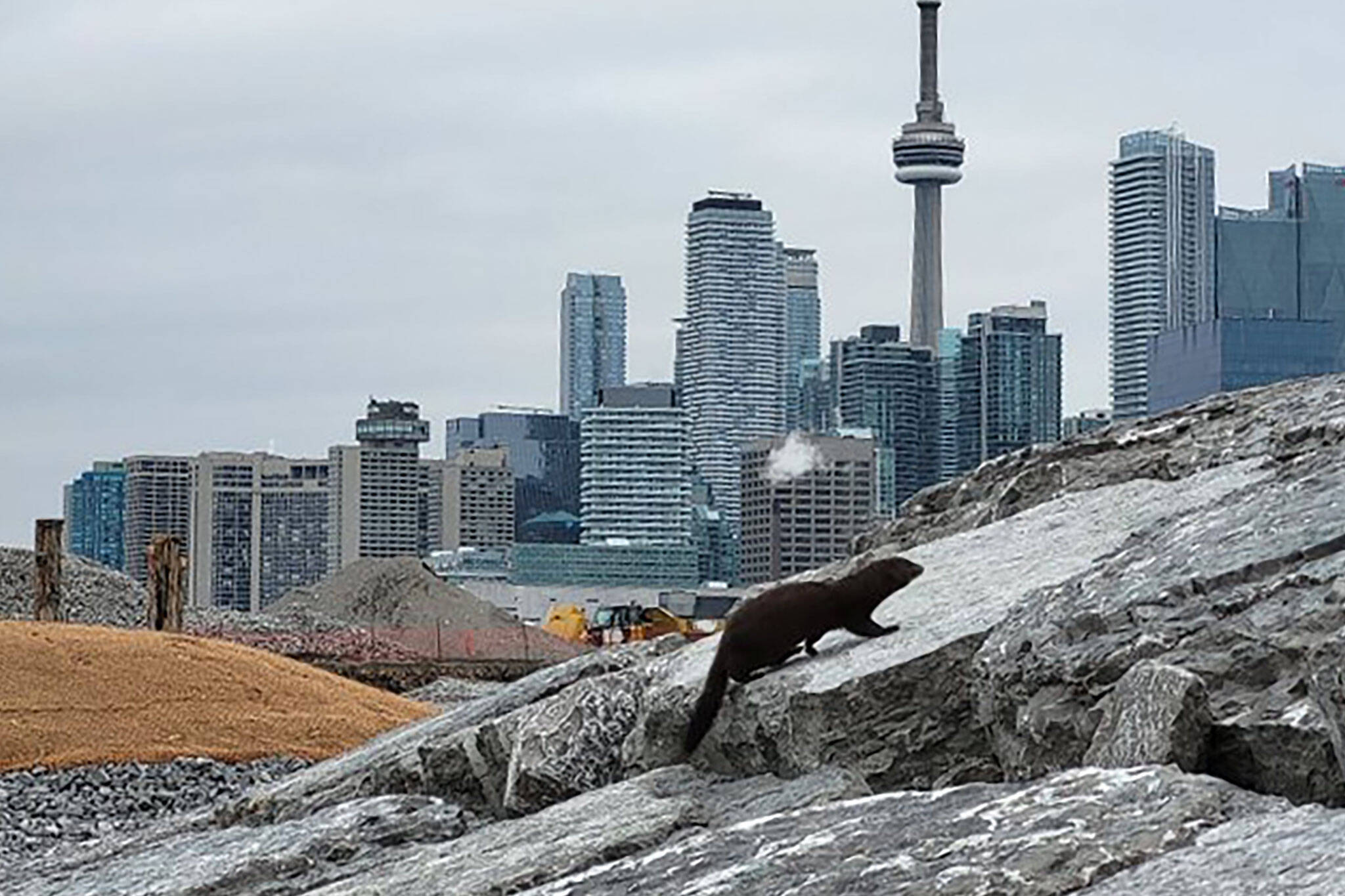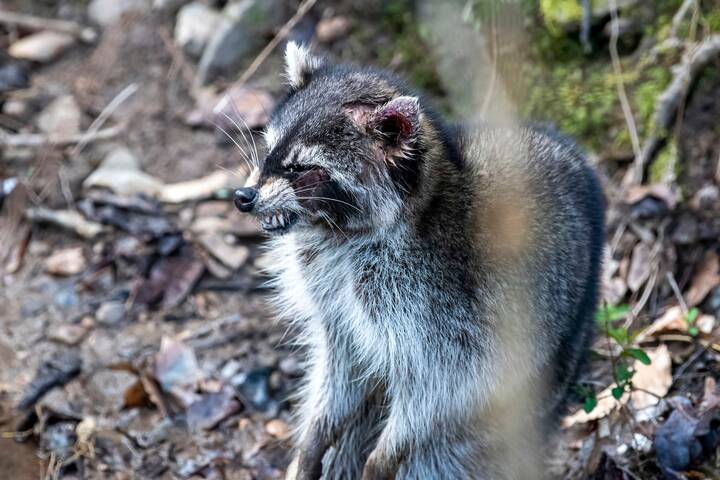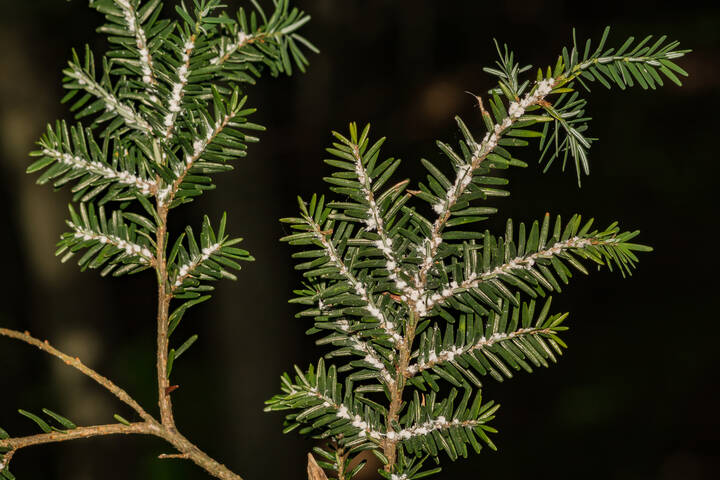
Adorable mink just staked its claim on a Toronto river that doesn't exist yet
Think of Toronto wildlife, and a few animals immediately come to mind. You've got your trash pandas, your cobra chickens, and squirrels ranging from grey to black to even white.
If the weasel-adjacent mink happened to be on your top three, then chances are you live close to one of the city's waterways or shores, where these adorable members of the Mustelidae family often call home.
But one smart little mink seems to have access to a crystal ball, or some very good intuition about where a river will soon flow through the Port Lands area.
Like a person buying inland Florida real estate in anticipation of sea level rise, one determined little mink was spotted making its home right next to Toronto's new naturalized Don River mouth.
The only catch being that the majority of this human-made course for the major waterway is currently just a dry trench.
Spotted on site! This mink was practically posing in front of the CN Tower in Canoe Cove! pic.twitter.com/7dvyyhLChR
— Rocky (@TheRockRipper) January 12, 2023
The critter has set up shop near Canoe Cove, just west of the current dammed trench in what was formerly the Polson Slip.
There is indeed already water in the slip and coves etched into the future Villiers Island, and the presence of mink in the area bodes well for the Port Lands' post-industrial rebirth.
According to the City of Toronto's local mammal guide, the species known as Mustela vison "is a large dark brown, skinny mammal, with a white chin and sometimes a white mark on the chest. Its partially webbed feet help it swim – and it is superbly at home in the water."
They've never gained the local stature of stripey, trash-stealing raccoons or honking, poop-machine Canada Geese, but you can find mink in rivers, streams, and lakes all over Toronto and the surrounding region, often spotted hunting for aquatic prey like crayfish.
Mink may also be seen along the Don, the Rouge, Pettitcoat Creek, the Leslie St. Spit, and at Bluffers Park.
— Douglas Yardley (@douglasyardley) January 12, 2023
It doesn't have to be a rushing torrent or a deep lake either. If there's a food source in that water, there could be mink nearby.
I've seen them in the High Park creek numerous times.
— Volver (@VolverToronto) January 12, 2023
The City of Toronto's literature on the local mink population states that they subsist on a mix of "terrestrial and aquatic organisms, such as fish, frogs, salamanders, crayfish, invertebrates, birds, small mammals (up to the size of muskrats – a favourite food), and snakes."
Yes, they eat freakin' snakes.
The little critters are pretty adept in water and can dive to depths of up to six metres and swim distances of about 30 metres underwater. Which is not only handy in catching prey, but avoiding predation from animals, including red foxes, bobcats, and great horned owls.
Travelling back just a few generations, the mink's primary predator was once the human, though as furs have fallen out of fashion, populations are bouncing back.
SHAME on her for wearing the fur of an endangered species! And right out in public! #shame #shame #shame
— eriq49 🇺🇦 (@eriq49) January 13, 2023
Others disagree on the specific species of water weasel shown in the photograph, and a few commenters have suggested that this is actually an otter.
Regardless of its DNA, that skyline pose makes it an instant icon of either the mink or otter world.
Latest Videos
Latest Videos
Join the conversation Load comments







